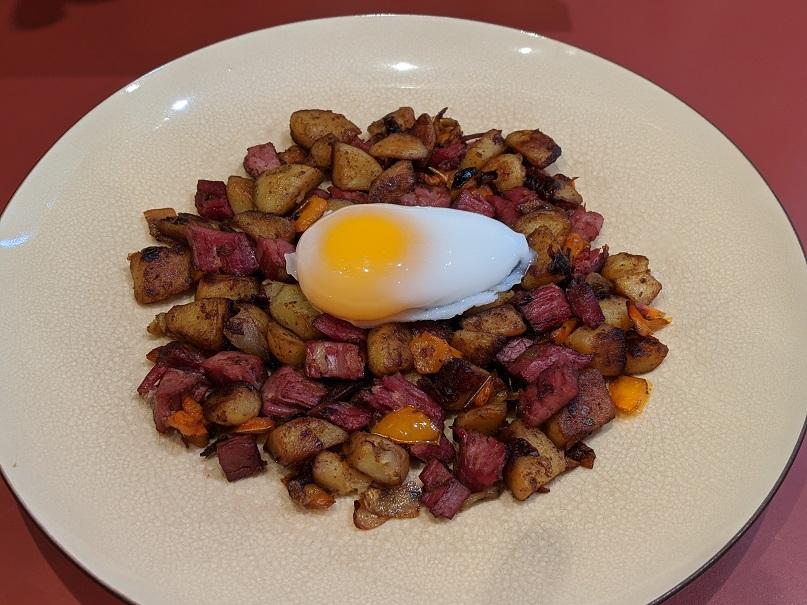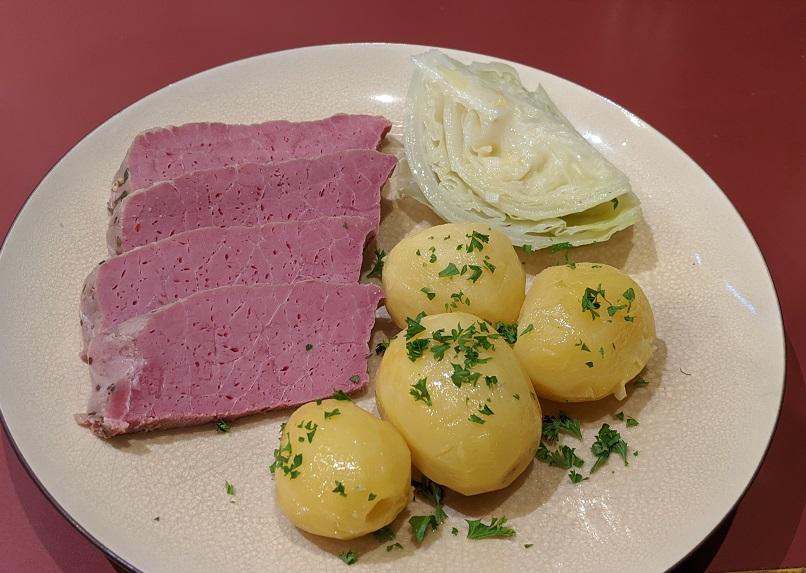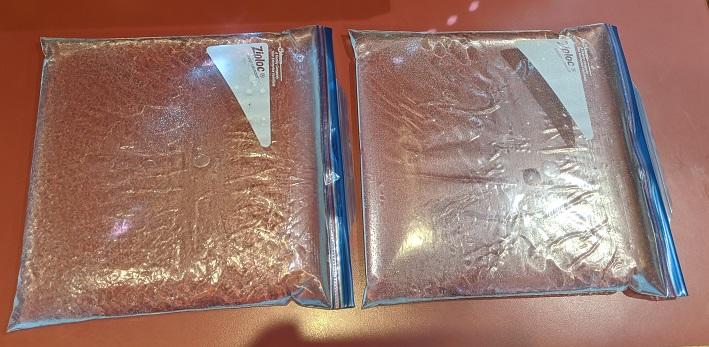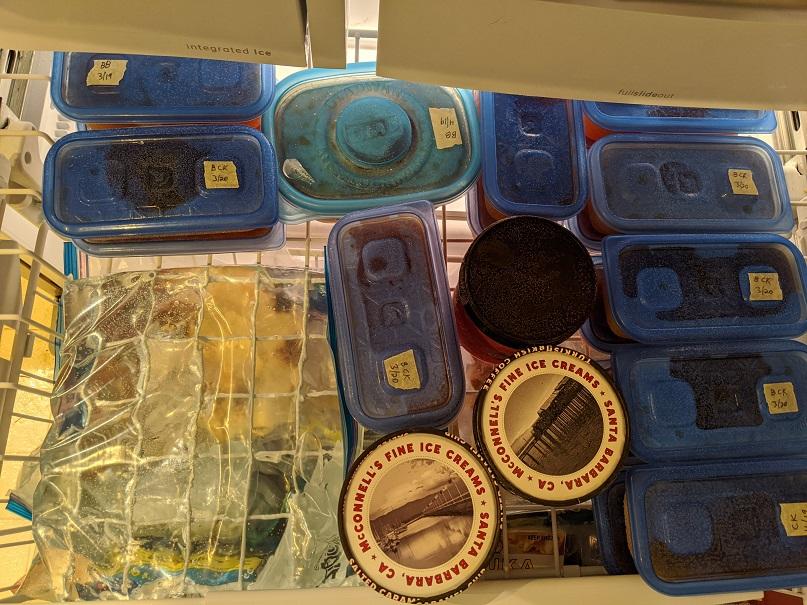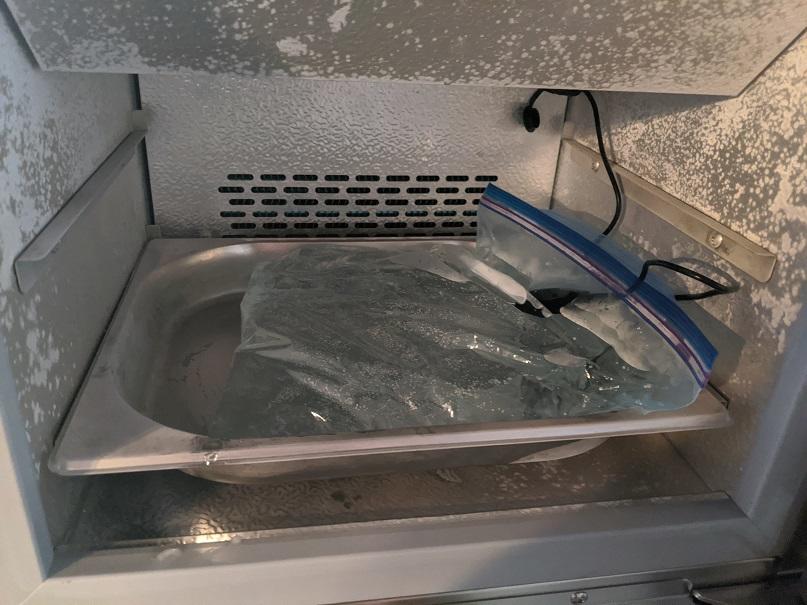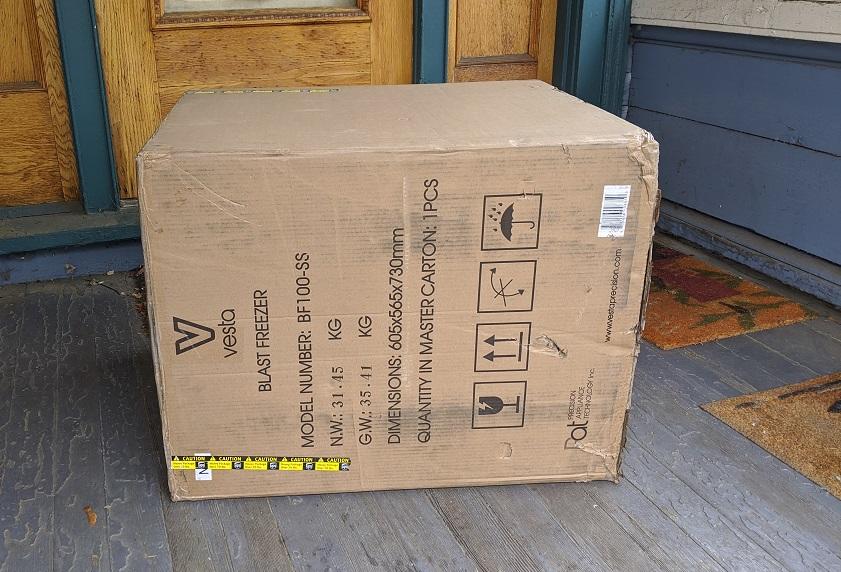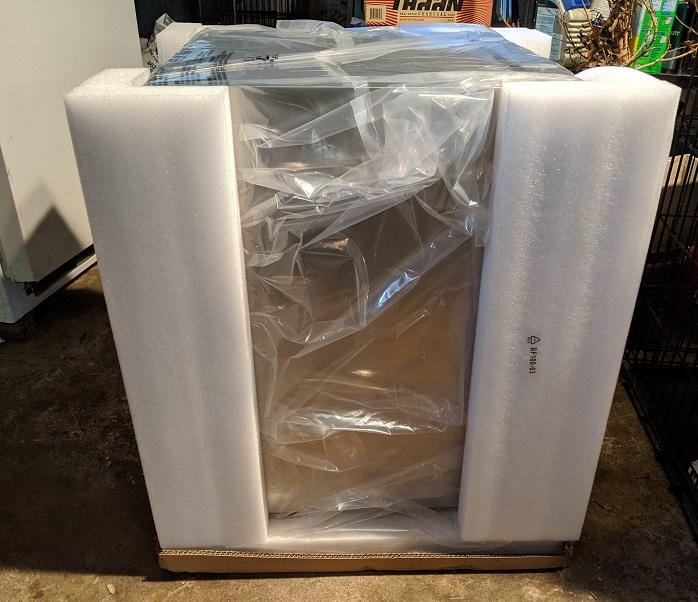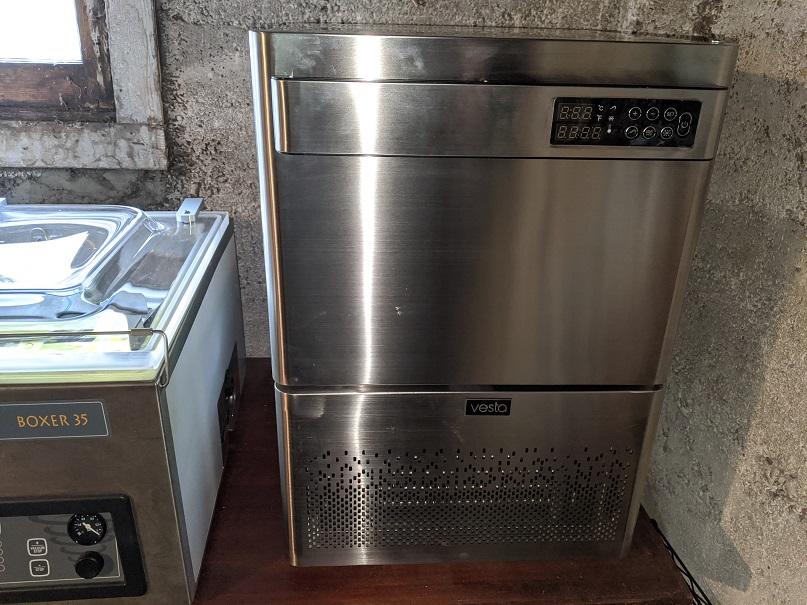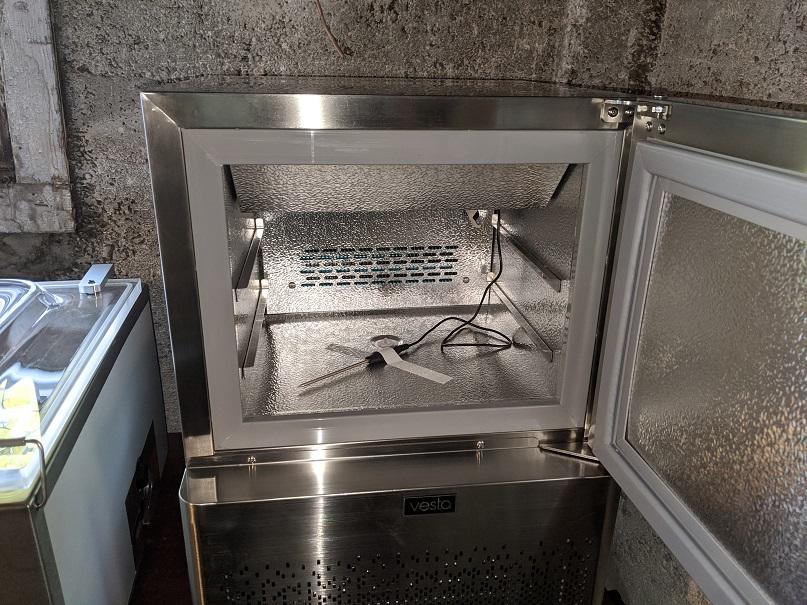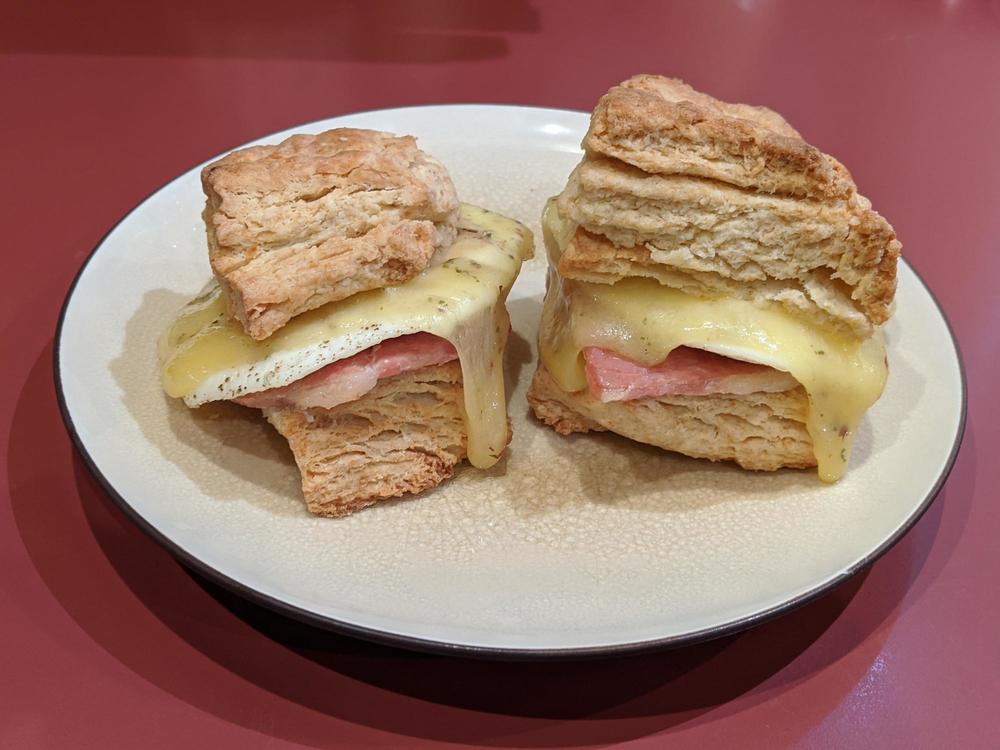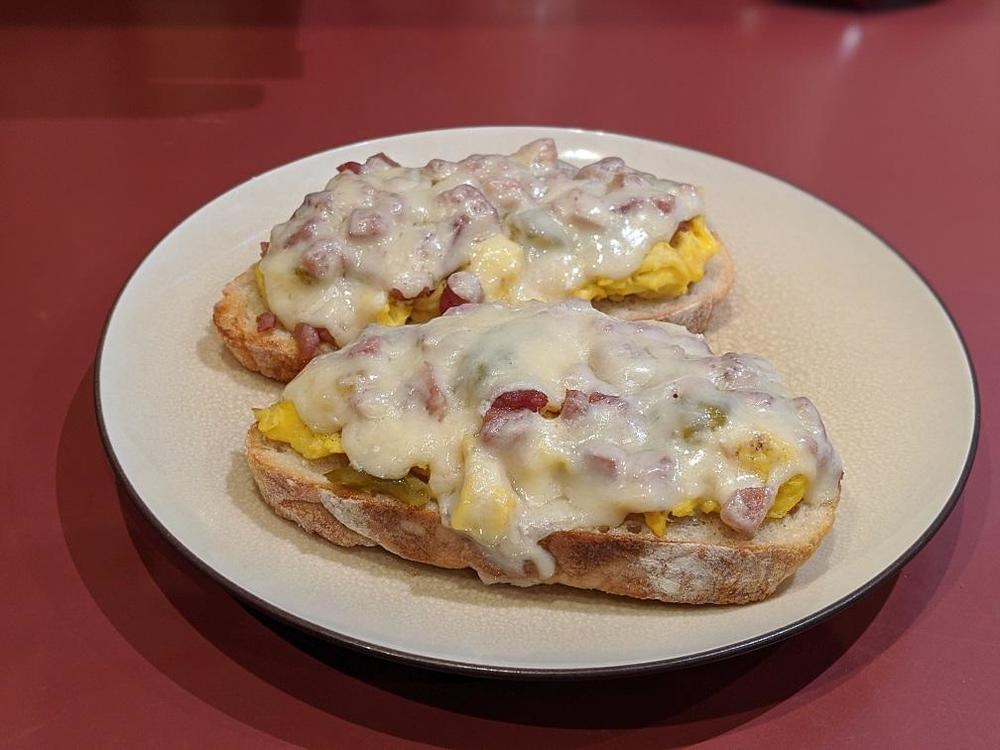
StumptownGeek
participating member-
Posts
28 -
Joined
-
Last visited
Content Type
Profiles
Forums
Store
Help Articles
Everything posted by StumptownGeek
-
Focus Camera has the CSO for $139 w/free shipping after coupon code SDOVEN. Might be your last chance in the US...
-
-
-
-
The convection fan on my older CSO failed recently, too. Haven't gone in to debug it yet. I can rotate the fan with a toothpick through the upper vent holes so it's not seized enough to lock up. If you find a source for a replacement fan/motor please let us know.
-
First experiment to characterize the ability of my Frysta BF100 and compare it with using my regular kitchen fridge's freezer. Warning: there is math at the end... I filled each of two 1-gallon Ziploc freezer bags with 2 quarts (1.89kg) of tap water. Each was set out on a counter until they reached 65F (18.3c) as measured with my Thermapen: I plugged in the Frysta, installed the just received GN1/2 tray, set it to -22F (-30c) and let it pre-chill for half an hour. I then placed one of the bags in my regular freezer, which is set to 0F and heavily loaded with stock, ice cream, etc.: The other bag I placed in the Frysta tray with the temperature probe in the water: I closed my freezer door, closed the Frysta door and checked the Frysta probe temp. It reported 61F (16.1c), 4F below the Thermapen measurement. I set the Frysta to Hard Blast Freeze, 4 hours, -22F, and after the annoying Frysta compressor and evaporator fan start delay, we were off. The Frysta probe temp reported 31F (-0.5c) after 37 minutes. I checked my kitchen freezer bag at that time with the Thermapen and recorded a temp of 42F (5.5c). However, since the initial Frysta probe temp didn't match the Thermapen, I watched for the temperature drop stall, which happened at a reported 29F (-1.7c), so that was when the machine actually hit a real 32F (0c). So the Frysta was again off by about 3-4F, so its water was at about 35F when my regular freezer's was at 42F. 65F to 35F in the Frysta in the same time my kitchen freezer took to get from 65F to 42F... At that point the Frysta was extracting latent heat for the liquid to solid phase transition, so there was no temperature change for quite a while. The Frysta temperature finally starting dropping again right at the 3 hour mark. I checked the bag of ice in my kitchen freezer. It was almost completely frozen. Not exactly an impressive showing by the Frysta... I let the Frysta continue until it reported a probe temp of -1F (-18.3c) 3 hours and 27 minutes after the Blast Freezing started. Now for the math... Over the course of 3:27 (12420s) the Frysta removed about 904kJ from the water: (liquid->solid transition) + (temperature drop) (1.893kg x 334kJ/kg) + (1.893 kg x 4.184kJ/kgc x 34.4c) = 904kJ Which is about 72.8J/s: 904kJ/12420s = 72.8J/s The Frysta User Manual claims that the BF100 capacity is 3kg from +90C to -18C in 240 minutes. If that food were pure water that would require removal of about 2360kJ: (liquid->solid transition) + (temperature drop) (3kg x 334kJ/kg) + (3kg x 4.184kJ/kgc x 108c) = 2360kJ Which is about 164J/s: 2360kJ/14400s = 164J/s Blast freezers seem to be commonly rated by weight capacity, which implies that there's a standard food defined with a specified latent heat of fusion and specific heat behind the ratings, but a few minutes of Googling hasn't turned it up for me yet...
-
I won't have a chance to play until Monday. This weekend I'm running a second branch circuit out to my basement kitchen extension. Too many gadgets, not enough Amps... What are you putting food containers on while waiting for the missing shelf? Just the chiller floor? Tried any GN1/2 pans?
-
My Vesta Frysta Blast Chiller has arrived. It might be a tiny blast chiller but it's not actually small... For Jo, and others that might have ordered, you can cut around the base for removal: Mine is now in place down in my basement but not yet exercised/tested: It didn't arrive with any interior shelves:
-
-
The wire grill appears to be a Williams Sonoma exclusive in the US: https://www.usa.philips.com/c-p/HD6372_94/avance-collection-indoor-grill
-
-
Ask and you might be enabled: https://www.walmart.com/ip/Philips-Avance-Plus-1660W-Infrared-Indoor-Grill-w-Two-Grill-Grates-HD6372-94-CERTIFIED-REFURBISHED/145798657
-
Unfortunately I see it in their discontinued section: https://www.cuisinart.com/discontinued/toaster_ovens/CSO-300N1/ Glad I got my second CSO a few months ago...
-
-
-
-
Mustard greens with bacon, braised in chicken stock, reduced, topped with a poached egg and pink grapefruit
-
-
In the (US) Pacific Northwest spring arrives early and summer late. Plenty of greens and cruciferous veggies at the Farmers' Market this morning: Tonight, steamed purple sprouting broccoli (CSO) with crustini from Modernist Bread French Lean Bread (master recipe), Mangalica Ham and Manchego cheese...
-
-
12 oz. Bone-in Ribeye, cooked SousVide @ 143F for 1:45 and then browned on cast iron: What, where's the veg? Fine. Half of a 12 oz. Bone-in Ribeye, cooked SousVide @ 143F for 1:45 and then browned on cast iron, with Green Beans steamed 15min @ 212 in the CSO: Guess I'm having steak and eggs for breakfast tomorrow...
-
-
The Lodge L8SKL many are using for baking bread with the CSO has dropped to $15.29 on Amazon (US): Lodge L8SKL, 10.25" Cast Iron Pan
-
There's a cultural component to this as well. In Europe and North America most people prefer 2700-3000K. In Asia 4000K is often preferred. There are LED bulbs on the market with the ability to change color temperatures. Some people prefer different color temperatures at different times in the day (cooler in the morning, warmer in the evening, for instance) and those bulbs allow that. Also, there is some, not uniformly accepted, evidence that certain color temperatures at certain times in the day might have positive or negative health or behavioral effects. As far as color rendering is concerned, that's separate from color temperature. You can have a 2700K light source in which many colors look off, and a different 2700K light source in which most colors look great. There aren't good, readily available metrics used for most lighting available. There is a relatively poor metric in common use, Color Rendering Index (CRI), which rates the quality for eight defined color samples against a reference source of light, with 100 as the top of the scale. Incandescent has a CRI of 100. Typical LEDs are around 83, though specialty LEDs go as high as around 98. CRI as a metric is significantly flawed, however, so a higher CRI source can look better for those eight colors than a lower CRI source but worse for general use. If you can it's best to see the actual light source in your target environment and see how it looks to you. Dimming is another subject. Some LED lights don't support dimming. For those that do, the minimum illumination before flickering or the light turns off completely is a function of both the specific lights and the dimmer. Sometimes manufacturers offer lists of recommended product pairing for best dimming performance but it's not common. Again, unfortunately, you're usually best off trying combinations on your own. There is yet another light option with dimming. Dim to Warm LED lights lower their color temperature automatically as they are dimmed, similar to incandescent lights. At full brightness they might be 2700K to 3000K and at minimum brightness they might be 1900 to 2200K. This has the "dim to candlelight" effect many people used dimmers to get with incandescent lights.
-
"Modernist Cuisine: The Art and Science of Bread"
StumptownGeek replied to a topic in Cookbooks & References
Price on Amazon (US) has dropped to $415.35



